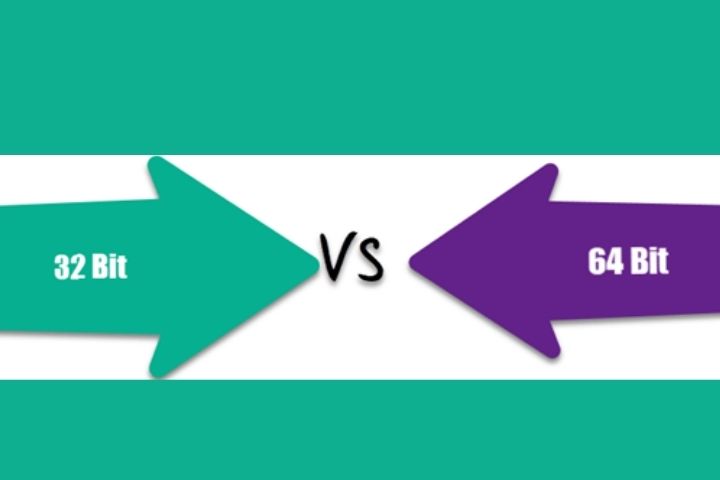The processor (CPU) uses the “address” to access the main memory (RAM). Each byte of RAM has a different address. Therefore, a CPU that can understand 32-bit addresses can address up to 2^32 = 4G different bytes at a time. Therefore, an OS written for a 32-bit CPU can also allow processes to easily access up to 4G of memory. If the CPU supports it, you can use methods such as PAE to surpass this limit, but of course, it is not easy.
A 64-bit CPU can address 2^64 = 16TB of memory. Each (64-bit) process (which can only run on 64-bit OS) can use up to 16TB! Please note that it is very possible to make 32- bit processes built for 32-bit operating systems run on 64-bit OS. Similarly, a 64-bit CPU is designed to run a 32-bit OS. 32-bit processes running on 64-bit OS are still limited to 4G.
However, there are losses. Compared with 32-bit programs, the memory space occupied by each pointer or memory address stored by the running program is twice that of 64-bit programs. Therefore, if your program requires one-time use> 4G memory, please set it to 64-bit. If you only need a 64-bit program, set the OS and CPU to 64-bit. For others, 32-bit is smaller and faster.
Most people will tell you that a 64-bit OS can handle more memory and usually handle larger numbers. Although this is true, it is not an important part.
When people say “64-bit processor”, they usually mean a processor that implements the x86-64 instruction set. Compared with the previously used x86 instruction set, x86–64 has some powerful additional features (new commands that the processor can execute), which makes it possible to process more numbers (including larger memory addresses), and usually provide more Good performance. Of course, these advantages only appear when new features are used-x86–64 is still compatible with x86, which means you can also use the older instruction set.
This means you can write (technically compiled) software that uses only the x86 instruction set-then it can run on x86 and x86–64, or you can take advantage of these new features, and the software will be faster ( And may support processing more memory), but you will not be able to run it on older computers.
That’s it-a 32-bit OS is an operating system that uses only the x86 instruction set. You can run it on 32-bit and 64-bit computers. A 64-bit operating system is an operating system that uses a complete x86-64 instruction set, which can achieve better performance (and can handle more memory), but you can only run it on a newer 64-bit computer.
Whenever you buy an operating system, software, or game, you may see 32-bit and 64-bit options. If you are a Windows user, you must note that you have two Program Files folders-one simple “Program Files” folder and the other labeled “Program Files (x86)”. This “Program Files” folder is used to store DLLs. Only applicable to 64-bit application files. The x86 folder is used to store DLL files for 32-bit applications.
To install the 64-bit version of Windows, you need a CPU capable of running the 64-bit version of Windows. The advantage of using a 64-bit operating system is most obvious when you install a large amount of random access memory (RAM) (usually 4 GB or more) on your computer.
In this case, because a 64-bit operating system can handle a large amount of memory more efficiently than a 32-bit operating system, a 64-bit system can have a higher response speed when running multiple programs at the same time and switching frequently.
A computer with a 64-bit processor can install a 64-bit or 32-bit version of the operating system. However, for a 32-bit operating system, a 64-bit processor will not be able to run with all its features.
How Does a 64-Bit Processor Handle More RAM?
This computer system only supports binary counting. Can be 0 or 1. Each value is considered a “bit”. This means that for a 1-bit calculation, you will get two possible values, 2 bits means 4 values, and then at 3 bits, double it to 8 (2³).
Continue to grow exponentially, and you will end up with 32 bits worth 4,294,967,296 (2 to the 32nd power) and 64 bits worth 18,446,744,073,709,551,616,616 (or from the 2nd power to the power of 64).
This is a lot of bits, and the numbers indicate that a chip that supports higher-bit calculations may be more powerful. Far more than doubled. Therefore, it is clear that 64-bit processors can perform more calculations than 32-bit processors.
Difference Between 32-Bit And 64-Bit CPU
The biggest difference between 32-bit processors and 64-bit processors is the number of calculations they can perform per second, which affects how quickly they can complete tasks. 64-bit processors can be used in dual-core, quad-core, six-core and eight-core versions for home computing. Multi-core can increase the number of calculations that can be performed per second, which can increase processing power and help make computers run faster. In most cases, software programs that require a lot of calculations to run smoothly can run faster and more efficiently on multi-core 64-bit processors.
Another big difference between 32-bit processors and 64-bit processors is the maximum memory (RAM) supported. A 32-bit computer can support up to 3-4 GB of memory, while a 64-bit computer can support up to 4 GB of memory. This feature is important for software programs used in graphic design, engineering, and video editing because these programs must perform many calculations to render their images.
One thing to note is that unless the 3D graphics program is not at all and the game is a 64-bit program, it will not bring much benefit from switching to a 64-bit computer. For any program written for a 32-bit processor, a 32-bit processor can be used. As far as computer games are concerned, by upgrading the video card instead of using a 64-bit processor, you will get higher performance.
Eventually, 64-bit processors became more and more common in home computers. Because of the low price and because more and more users are using 64-bit operating systems and programs, most manufacturers use 64-bit processors to build computers. Computer parts retailers are offering fewer and fewer 32-bit processors, and soon they may not offer any processors at all.
Also Read : How To Increase Internet Speed or Crack Internet Speed?







